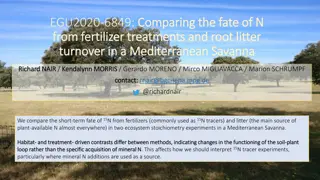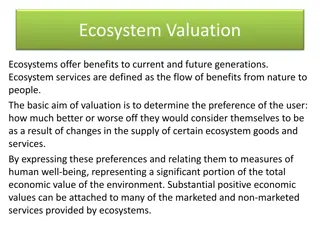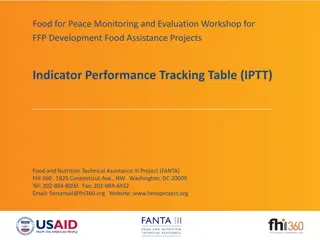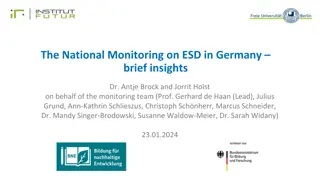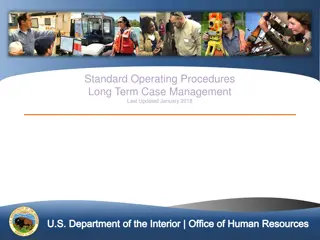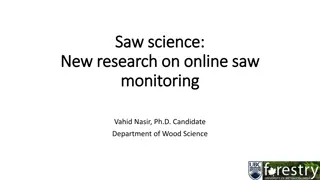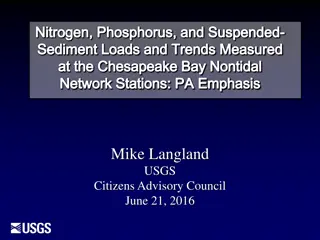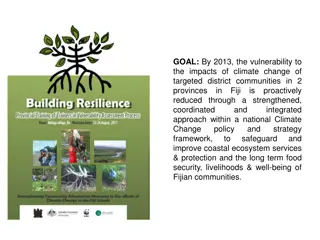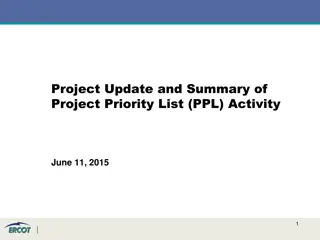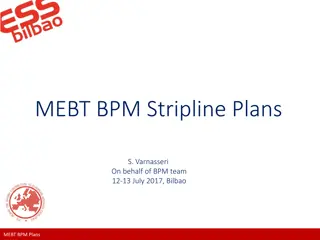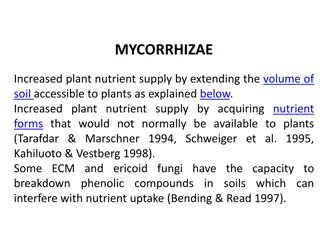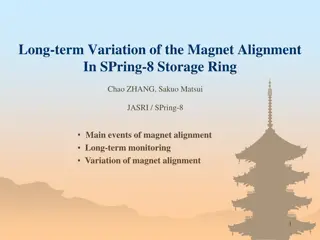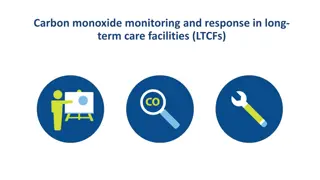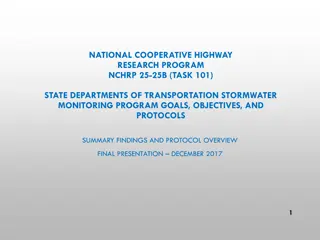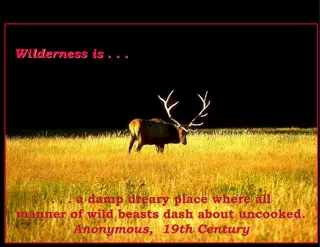Long-term Ecosystem Monitoring Project Status Report
The Long-term Ecosystem Monitoring Project, led by Diane Burbank, provides an overview of a 50-year monitoring effort focusing on the effects of broad-scale environmental changes. The project involves sampling soil, vegetation, lichen, and down woody material at 20 plots every 10 years. Site selection criteria include dominant natural communities and soil types, while distribution data shows most plots are in Wilderness or NRAs. The project's sampling design is based on FIA protocols with modifications to accommodate long-term monitoring objectives. Current status indicates 20 sets of plots have been established, with soil and vegetation sampling completed on all plots and ongoing data analysis and storage practices.
Download Presentation

Please find below an Image/Link to download the presentation.
The content on the website is provided AS IS for your information and personal use only. It may not be sold, licensed, or shared on other websites without obtaining consent from the author. Download presentation by click this link. If you encounter any issues during the download, it is possible that the publisher has removed the file from their server.
E N D
Presentation Transcript
Long-term Ecosystem Monitoring Project Status Report Diane Burbank December 11, 2014
LEMP Overview Long-term effects of broad-scale environmental changes 50-year monitoring effort 20 plots sampled every 10 years Sampling of soil, vegetation, lichen, and down woody material GMNF Partners include o USFS Northern Research Station o Natural Resource Conservation Service o VYCC o VMC, ANR-FPR
LEMP Site Selection Dominant Natural Communities Dominant soil types Use Reference Area Network > mile from road, >500 feet from trail 80 + year old stands Sites with little to no disturbance, past 30 years No future disturbance anticipated Range of aspects and elevations
LEMP Distribution Most are in Wilderness or NRAs (17/20) 2 in Ecological Special Areas 1 in the Escarpment MA 3 in Northern Green Mountain Biophysical Region; remainder in Southern Green Mountains All but 1 Landtype Association are represented
LEMP - Distribution Elevation Distribution of LEMP Plots 1200 1000 800 Elevation (m) 600 400 200 0 ONH HNH ONH HNH NH NH NH SNH NH SPF NH NH NH YBRS NH NH NH YBRS NH F Natural Communities
LEMP Sampling Design Started with FIA Design Phase 2 & 3 plot protocols with minor modifications Trees Vegetation structure, diversity Down woody debris Soil sampling design based on VMC Long-term Soil Monitoring Project protocols FIA lichen sampling protocols modified to accommodate soil sampling
LEMP Current Status 20 sets of plots established 2008-2011 Soil & vegetation diversity sampling completed on all 20 plots Tree, sapling, down woody material, and lichen sampling completed on less than half of the plots All plots permanently monumented Soil samples dried and shipped to Hubbard Brook for chemical and physical analyses and storage. Data stored in spreadsheets and on paper.
LEMP - Soils Worden, Hogback, and Mundal most frequently encountered soils of pits did not fit well with existing soil series descriptions. Soil horizon forms for all plots completed by Thom Villars, NRCS, stored at GMNF-Rutland Soil reports prepared by Thom for Sites 6-20 Lab analyses completed but not yet summarized. Approx. Soil Series # pits atypical skeletal soils 3 Berkshire 2 Brayton 1 Buckland 2 Colonel 3 Dixfield 1 Dummerston 2 Fullam 4 Glebe 1 Hogback 6 Lyman 2 Marlow 4 Mundal 5 Peru 3 Peru or Marlow 2 Rawsonville 3 Saddleback 2 Surplus 3 Tunbridge or Berkshire 2 Wilmington 1 Worden 7 Worden (Rawsonville) 1
LEMP - Vegetation 55% sites northern hardwood, with 1-2 sites representing less common forest types Sugar maple most dominant species in terms of canopy cover Beech decline due to beech-bark disease apparent at several sites Missing tree, sapling, and DWM on most plots Vegetation data not summarized, on paper forms stored at GMNF in Rutland. Red Oak-Northern Hardwoods Hemlock-Northern Hardwoods Northern Hardwoods Red Spruce-Northern Hardwoods Montane Yellow Birch-Red Spruce Montane Spruce-Fir Montane Fir
Looking Ahead Re-sampling scheduled to start in 2018 Lessons Learned/Challenges o VYCC contribution valuable; safety o Collaboration among participants valuable o Schedule coordination very difficult internally o Missing data o Lack of analysis and electronic storage o Soil sampling design will run out of room o Unable to conduct additional desired sampling e.g. tree ring, foliar analyses
Looking Ahead Next steps o Ensure long-term project viability Maintain partnerships Solve data/sample storage issue Develop funding strategy before 2018 o Address missing data issue Gather missing data or defer to next sample period Re-evaluate approach to gathering tree, sapling, down woody material, and lichen data.
Better information Better land management Healthier ecosystems Quantify baseline and environmental trends Adaptive management Contribute data to regional databases Contribute to the science




